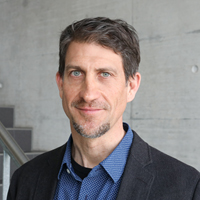Sustainable Scientific Computing
In this talk, we will show how light propagation in optical fibers can be used to perform practical computational tasks.
As light propagates through a multimode fiber (MMF), the type used in fiber-to-the-home, the optical modes exchange power and create new optical frequencies via a complex spatiotemporal non-linear transformation that occurs at relatively low optical powers because of the light confinement and the long interaction length that is possible in a fiber [1]. We will show recent results, obtained in collaboration with Prof. Psaltis group at EPFL, regarding programming the nonlinear interaction in MMFs for machine learning applications. Several different databases were used for recognition tasks. The classification accuracy that was obtained was comparable to deep, digitally implemented networks. The energy requirement for training and reading the optical system was orders of magnitude less than the digital counterpart.
Christophe Moser started his career as an engineer at Hexagon Metrology in Switzerland after graduating from EPFL in physics in 1993. He obtained his doctorate degree in 2000 in optical information processing from the California Institute of Technology.

Christophe co-founded and was the CEO of Ondax, Inc. (acquired by Coherent) in Monrovia, California. There, he has developed several commercially successful products based on volume holographic components such as tunable filters, wavelength stabilized high power diode lasers, pulse compressors and stretchers and Terahertz Raman spectroscopy systems.
In 2010, Christophe joined EPFL as an Associate Professor and is currently the Director of the MicroEngineering Section.
His current research topics include light based volumetric additive manufacturing to reach micrometer resolution at the centimeter scale in different materials whose properties ranges from very soft - hydrogels to very hard – ceramics, glass. He is also interested in neuromorphic computing using linear and non-linear propagation in optical fibers as computing elements.